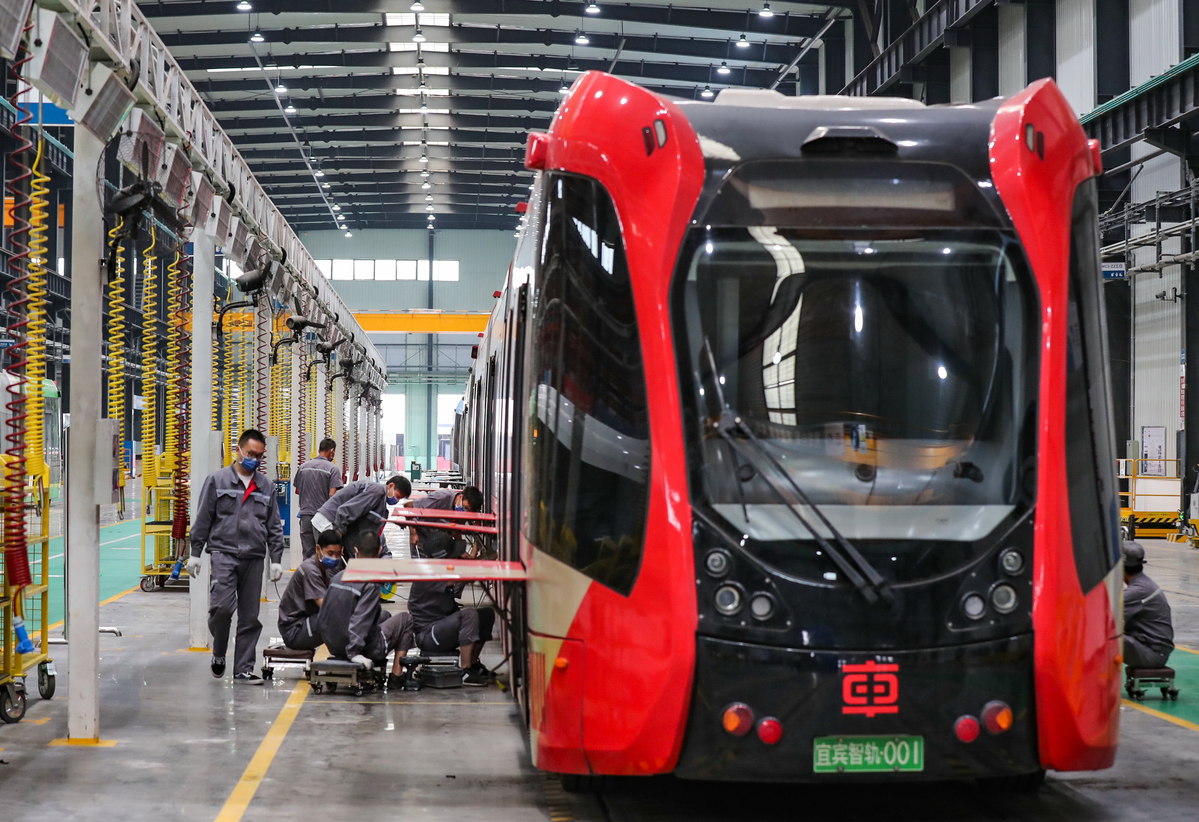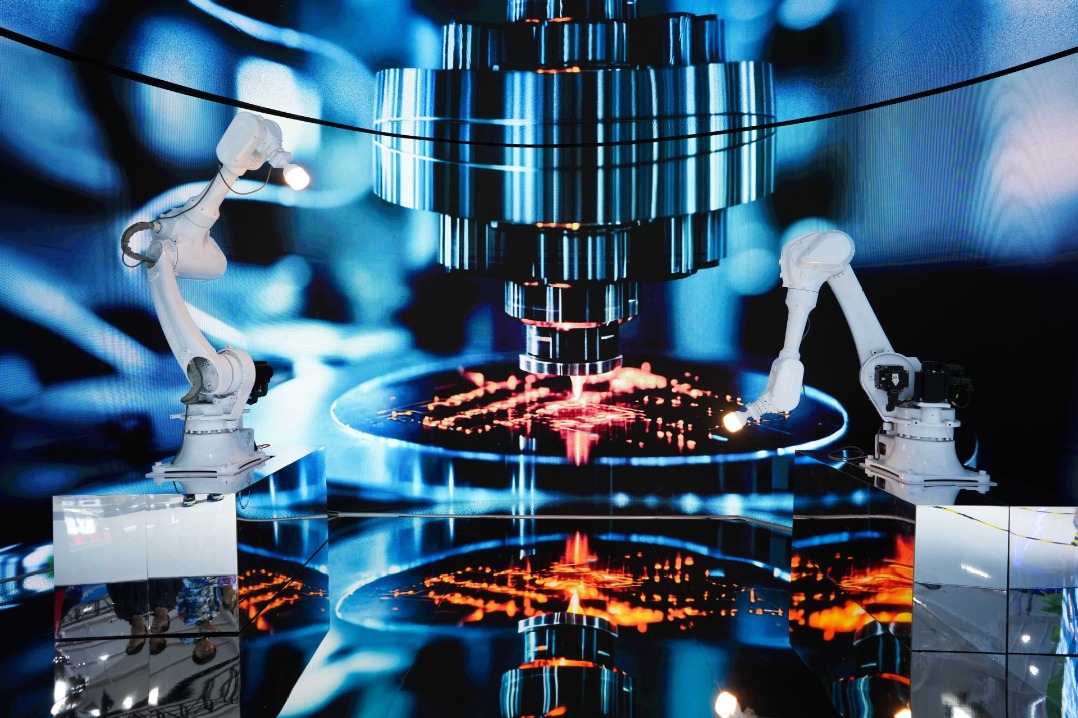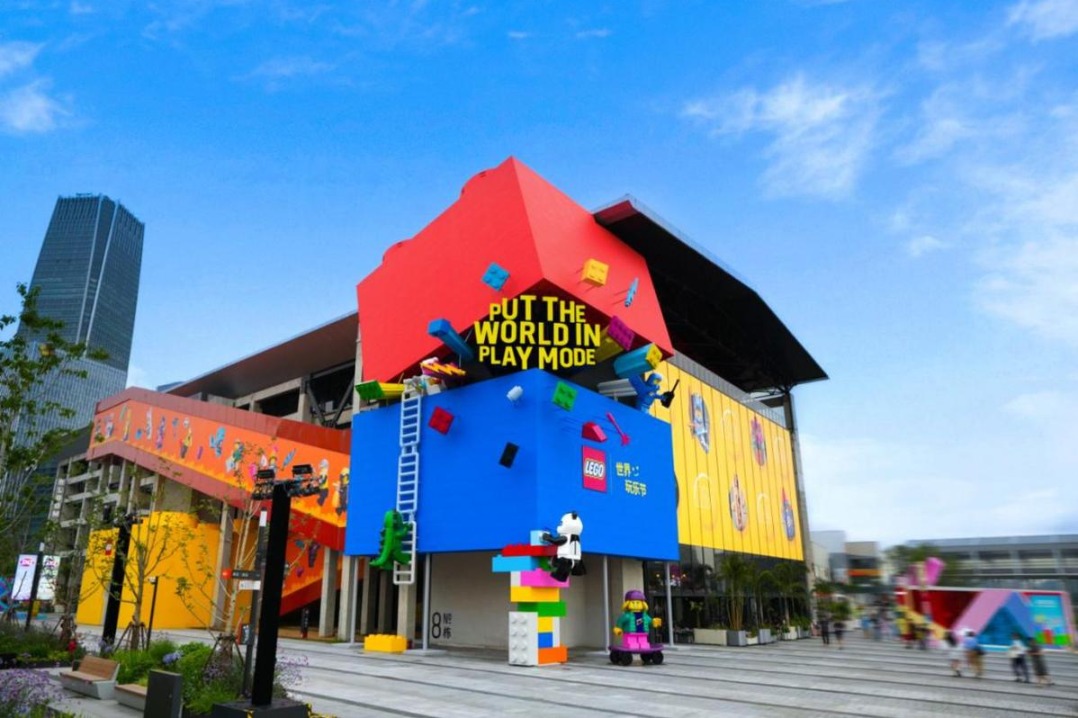Macroeconomic adjustments key for nation's growth


Improved macroeconomic adjustment measures and effective macropolicy coordination, a key part of President Xi Jinping's economic thought, will continue to guide China's future growth and help sustain the country's stable economic performance and secure its short-to-long term development targets, according to policymakers and senior advisers.
China is formulating a new development paradigm and the country's recent proposals for the next five-year plan and its development goals for 2035 reflected the changing and challenging environment, they said. These will effectively utilize the Chinese government's capacity to comprehensively coordinate macroeconomic policies to pursue high-quality growth and structural reform on the supply side, they added.
The idea of the necessity to continuously improve macroeconomic adjustment is a part of Xi Jinping Thought on Socialist Economy with Chinese Characteristics for a New Era, which took shape in 2017 and has since guided the country's economic governance.
Xi, who is also general secretary of the Communist Party of China Central Committee and chairman of the Central Military Commission, delivered a speech at the 2017 Central Economic Work Conference, emphasizing that macroeconomic adjustments require "making discretionary choices and issuing corresponding prescriptions".
Beijing's proposals for China's 14th Five-Year Plan (2021-25) and development goals for 2035 have mapped out a clear path to a high-quality growth model, while also recognizing key challenges facing the economy resulting from the technological revolution, rising geopolitical uncertainties affecting its adoption of foreign technology, income inequality and pollution, and highlighting the importance of enhancing productivity and self-sufficiency, according to economists.
The National People's Congress, China's top legislature, will review the Government Work Report and release the full version of the 14th Five-Year Plan next year, which will include action plans pertaining to the key initiatives already revealed at the Fifth Plenary Session of the 19th Central Committee of the Communist Party of China, which was held in Beijing in October.
The key initiatives, especially pursuing productivity-focused, domestic demand-driven sustainable growth, a focus on technology localization, moving up the value chain, market opening-up, domestic circulation, urbanization and green economy, rely on comprehensive coordination of macroeconomic policies, said experts.
China's new development philosophy, which embraces innovation, coordination, going green, openness and sharing, is the guidance of the 14th Five-Year Plan, which is also a significant part of Xi's economic thought, said Yang Weimin, deputy director of the Economic Affairs Committee of the Chinese People's Political Consultative Conference National Committee.
Under that philosophy, the general target is to foster a new development paradigm with the domestic market as the mainstay and the domestic and international markets reinforcing each other, said Yang.
He highlighted that the new development paradigm should be able to adapt to the changing environment, taking advantage of the Chinese government's capacity to coordinate macroeconomic policies to continually pursue structural reform on the supply side and expand domestic demand.
Macroeconomic policies
The detailed proposals, released on Nov 3, have delivered clear messages on the coordination of macroeconomic policies, and are a basic requirement for macroeconomic governance, guided by the nation's overall strategic plans, according to Wang Yiming, former deputy head of the Development Research Center of the State Council.
"Fiscal and monetary policies will provide the major tools to achieve the long-term economic development goals," said Wang, who suggested building up a unified coordination mechanism to facilitate joint efforts on fiscal and monetary policy. The mechanism is expected to work along with employment, industrial, investment, consumption and environment protection measures to spur the real economy.
The annual Central Economic Work Conference, usually held in mid-December, will set the GDP growth target, fiscal budgets and general policy directions for 2021.
Next year, China is likely to normalize the supply of credit and its fiscal stance, as the economy is projected to maintain a sound rebound of about 9 percent year-on-year GDP growth, said Robin Xing, chief China economist at Morgan Stanley.
Infrastructure and property construction, however, are likely to moderate as strong stimulus measures are expected to be phased out after significant fiscal expansion and a surge in credit this year, Xing said.
Xing calculated that an annual average GDP growth of 4.5 percent is needed for China during the next five years, in order to achieve the target of becoming a high-level income country. "If China can successfully carry out the key initiatives, China's per capita gross national income may reach $14,600 by 2025."
Despite the pandemic, the world's second-largest economy recovered quickly this year as a result of strong monetary and fiscal policy support, which also fueled government-led infrastructure investment.
China's GDP grew by 4.9 percent year-on-year in the third quarter of this year, compared with a 1.6 percent contraction in the first half. Growth in industrial production resumed to the pre-COVID-19 level in October, with exports notching up double-digit growth from a year earlier.
Yi Gang, governor of the People's Bank of China, the central bank, reiterated recently that China will continue to implement countercyclical adjustments in line with the changing economic circumstances, maintaining ample liquidity and reasonable growth of the money supply and credit.
The monetary policy will also support enterprises, especially those producing important production materials or hit hard by the pandemic in the short term, to ensure their reasonable financing and stabilize economic growth, said Yi.
The central bank governor vowed to keep a stable macro leveraging ratio, or the debt-to-GDP ratio, and prevent systemic financial risks arising from excessive stimulus.
In terms of fiscal policy this year, China has largely expanded fiscal deficits to encourage government spending, especially in infrastructure construction, and raised the annual quota of government bonds. The government has cut taxes and fees by more than 2.5 trillion yuan ($382.83 billion) so far.
The Chinese government has taken effective measures to contain the pandemic, support economic growth and mitigate the impact on micro and small enterprises and vulnerable groups, said Chaipat Poonpatpibul, Lead Economist of the ASEAN+3 Macroeconomic Research Office.
China's fiscal policies have played an increasingly proactive role in both pandemic control and economic recovery, and the monetary policy measures have helped to ensure sufficient liquidity in the financial system. The support for micro and small enterprises has been innovative and significant, helping to cushion job losses, according to Poonpatpibul.
"It is important for the authorities to stand ready to deploy further policy support if the recovery falters, either because of a recurrence of the pandemic in China or a downturn in the global economy as the pandemic continues to spread. At present, China still has moderate policy space to do so," he added.
Geoffrey Okamoto, the International Monetary Fund's first deputy managing director, commented in November that in order to secure a balanced recovery, macroeconomic policies need to remain supportive and their effectiveness enhanced.
"Fiscal policy should stay slightly expansionary, shifting from spending on infrastructure toward strengthening social safety nets and promoting green investment," Okamoto said.
"With public debt already high and continuing to rise, fiscal policy will be more effective when underpinned by an improved macro-fiscal framework and intergovernmental coordination, while leveraging digital technologies to deliver support to vulnerable groups."
Li Xiang contributed to this story.





































